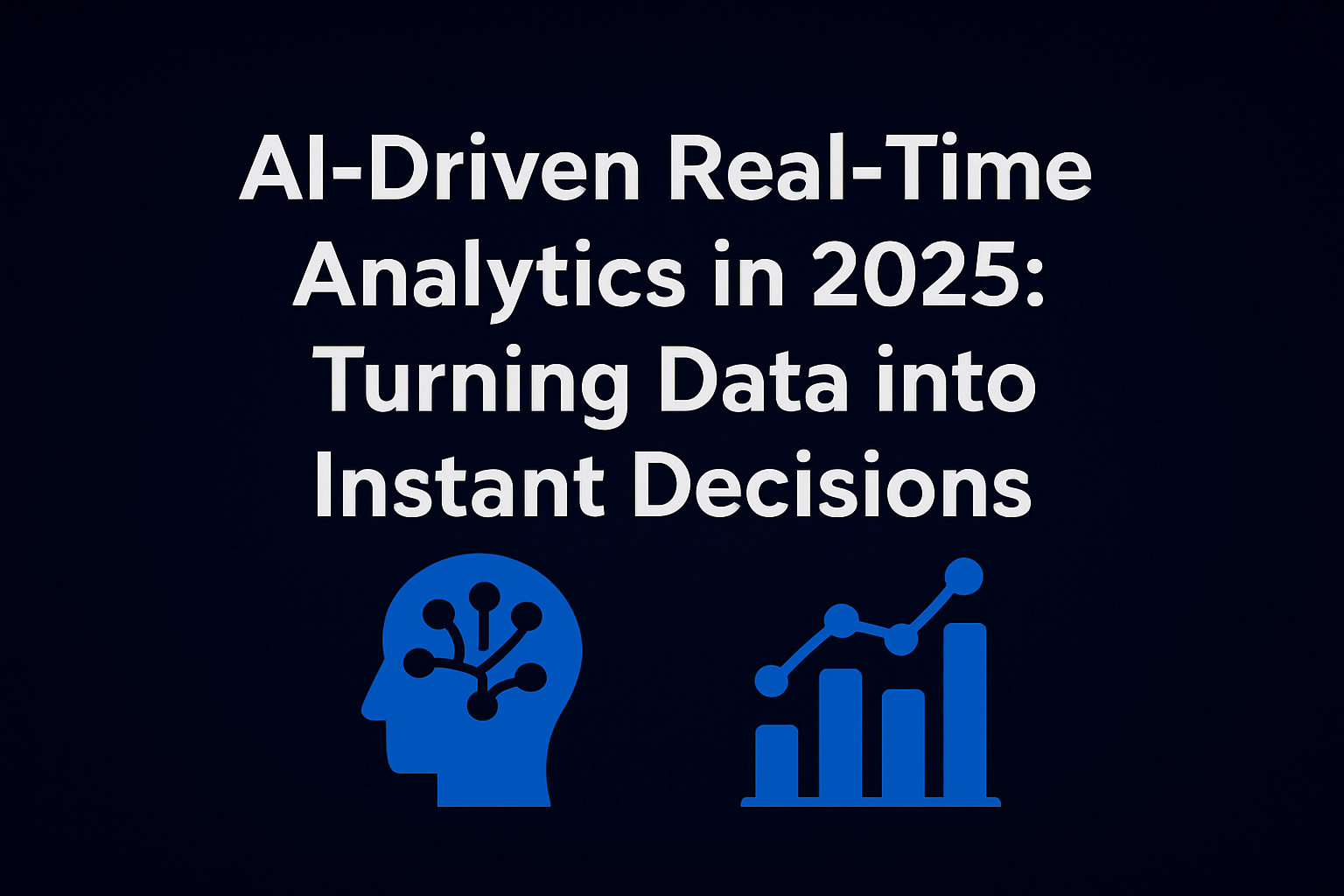Introduction
Data is often called the “new oil,” but in 2025, it’s not just about collecting data — it’s about using it instantly. Businesses no longer wait weeks for reports. Instead, AI-driven real-time analytics provides instant insights, helping organizations make smarter decisions on the spot.
From retail stores tracking live customer behavior to hospitals monitoring patient health in real-time, AI analytics is transforming industries across the USA.
What is Real-Time Analytics?
Real-time analytics means analyzing data the moment it is created.
Examples:
- E-commerce stores tracking what customers click and buy.
- Banks detecting fraud transactions instantly.
- Factories monitoring machine performance in real-time.
👉 Just like AI SEO trends 2025 predict search engine updates, real-time analytics predicts business changes before they happen.
Why AI is Crucial for Real-Time Analytics
Traditional analytics takes hours or days. AI speeds this up by:
- Processing Big Data – AI handles billions of data points instantly.
- Predictive Insights – AI forecasts outcomes, not just reports history.
- Automation – AI systems trigger automatic actions based on live data.
- Personalization – AI tailors experiences for individual customers.
(External Source: Gartner on Real-Time Analytics)
Key Use Cases of AI-Driven Real-Time Analytics in 2025
1. Retail & E-Commerce
Stores track live purchases and adjust prices dynamically.
👉 Similar to AI keyword research in SEO, businesses use AI analytics to target the right customers at the right time.
2. Finance & Banking
Banks detect fraud transactions in seconds. AI-driven analytics prevents millions in losses by spotting unusual behavior.
3. Healthcare
Hospitals monitor patient health using wearable devices and sensors.
👉 Just like digital twin technology simulates industries, digital health twins simulate patient conditions for real-time monitoring.
4. Manufacturing
Factories use sensors and AI to track machine health, preventing breakdowns before they happen.
5. Smart Cities
Real-time data helps manage traffic, energy use, and public safety.
👉 Similar to energy-efficient computing, smart cities use AI to save resources while improving quality of life.
Benefits of Real-Time Analytics
- Faster Decisions – Businesses act instantly instead of waiting for reports.
- Higher Customer Satisfaction – Personalized experiences improve loyalty.
- Reduced Risks – Early fraud or error detection prevents big losses.
- Efficiency Gains – Optimized processes save time and money.
(External Source: Forbes on Data Analytics)
Challenges of Real-Time Analytics
- Data Overload – Too much data can overwhelm businesses.
- High Costs – Real-time AI systems require investment.
- Privacy Concerns – Live tracking raises ethical and legal issues.
- Cybersecurity Threats – Hackers can exploit real-time systems if not secured.
👉 These challenges resemble the hurdles seen in energy-efficient computing SEO, where balancing performance and sustainability is crucial.
Future of AI-Driven Analytics (2030 Vision)
By 2030, experts predict:
- Businesses will rely on “AI copilots” for all decision-making.
- Real-time analytics will merge with AR/VR for live simulations.
- Governments will use AI analytics for disaster prediction and prevention.
- 90% of all industries will depend on AI-powered live dashboards.
(External Source: WSJ on Future of Analytics)
FAQs About AI-Driven Real-Time Analytics
Q1: Is real-time analytics only for large businesses?
No, in 2025 even small businesses use affordable AI tools for instant insights.
Q2: Can AI analytics predict the future?
Yes, it predicts likely outcomes, but accuracy depends on data quality.
Q3: What industries benefit the most from AI analytics?
Retail, finance, healthcare, and manufacturing lead the adoption in 2025.
Conclusion
In 2025, AI-driven real-time analytics has become the secret weapon for businesses. From reducing risks to delivering personalized experiences, AI ensures organizations can act instantly on valuable data.
The future of business success is no longer about who has the most data — it’s about who uses it the fastest. Companies that adopt real-time analytics today are setting themselves up for a stronger, smarter tomorrow.
